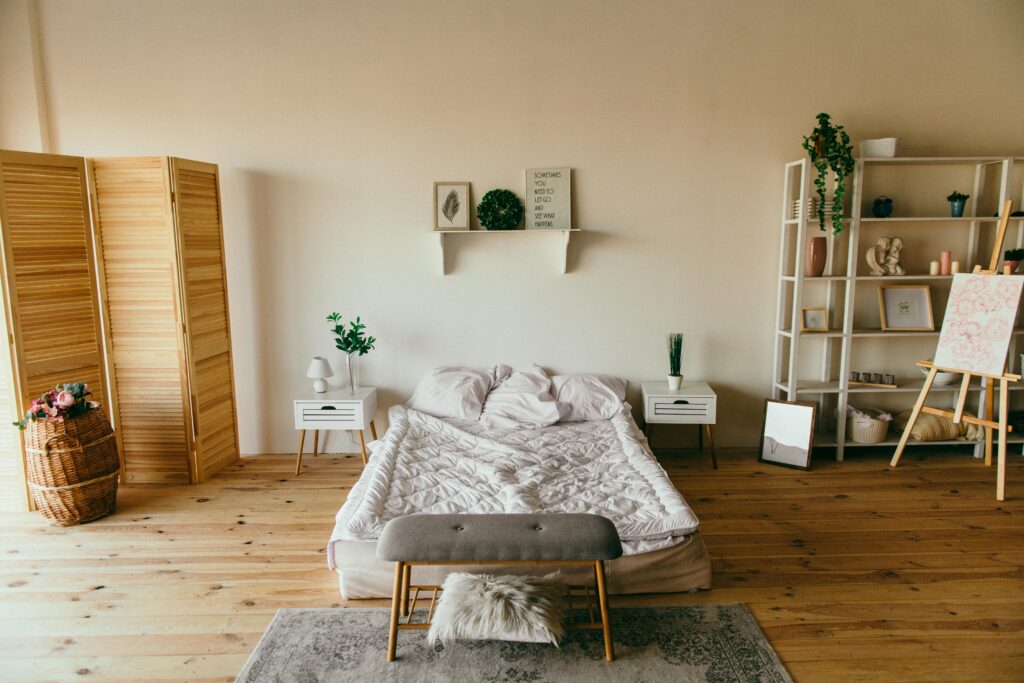Summer heat is one thing. Humidity? That’s a whole different beast—especially if you’ve got wood floors. Moisture in the air can sneak into your boards, making them swell, warp, or even crack over time. If you’ve ever walked across your living room and noticed a soft buckle or a creaky pop where there wasn’t one before, you’re not imagining things. That’s humidity doing its work.
The good news? A few simple habits can protect your floors and keep them looking great year-round. Here’s how to stay ahead of the sticky weather.
1. Keep the Air Moving
Stale, humid air is your floor’s worst enemy. Run your ceiling fans regularly and keep windows open when it’s not too muggy out. If your home tends to hold moisture, use a dehumidifier—especially in rooms with a lot of wood flooring.
2. Monitor the Humidity Level
You don’t have to guess. A cheap hygrometer (a device that measures humidity) can give you a clear read on your indoor air. Aim for a sweet spot between 35% and 55% humidity. Too high, and the wood expands. Too low, and it dries out and cracks.
3. Wipe Up Spills Right Away
It sounds basic, but moisture sitting on wood—even from a glass of water or wet shoes—can seep in and cause trouble. During humid months, floors take longer to dry, so don’t let spills linger.
4. Use Rugs in the Right Spots
Put breathable rugs (nothing rubber-backed) in high-traffic or splash-prone areas, like near sinks or entryways. They help cut down on moisture exposure and reduce wear and tear from feet dragging in wetness.
5. Let the AC Do Some Work
Your air conditioner doesn’t just cool—it pulls moisture out of the air. Keep it running during humid days to protect both your comfort and your flooring. Even a few degrees can make a difference in how much your floors swell.
6. Skip Wet Mopping
Don’t clean wood floors with a soaking wet mop. A barely damp microfiber mop does the job without overloading your floors with moisture. Stick to wood-safe cleaners and avoid water-based solutions unless they’re recommended by your floor manufacturer.
7. Watch for Gaps and Warping
Some minor changes are normal with seasons. But if you notice big gaps, cupping, or planks rising at the edges, it’s a sign the humidity is too high—or your floors are reacting badly. Take action early before it turns into expensive damage.
Wood floors bring warmth and beauty to your space, but they’re not fans of muggy weather. A little attention and some smart tweaks to your daily routine can keep them smooth, sturdy, and standing strong—no matter how high the humidity climbs. Treat your floors right, and they’ll return the favor for years to come.

